PARADOX AND ENIGMA, SHALLOW DRAFT CRUISERS.
Shallow draft
I sail oceans, but a successful ocean passage cannot be concluded without a landfall. There are thousands; even millions of shallow water places were I could land with my ocean going shallow draft boats. Deep draft boats must go elsewhere. I do not like to do likewise and exclude these places from my cruising agenda because many of them are pleasant and peaceful and do not cost money. Sometimes these shallow water places may be the only choice – if you cannot enter you have to sail elsewhere – in extreme cases that elsewhere may be thousands of miles away. Still not one ocean going boat in a thousand is small and has shallow draft.
Mostly racing is to blame for this sad fact. Racing optimizes windward performance. A deep draft boat sails better to windward than a shallow draft boat. People care more about being associated with fame than leading a rational life. Irrationally cruisers copy racers.
Prior to 1970 ocean racing in the US was done under CCA- rule (Cruising Club of America) in Europe the it was the RORC-rule (Royal Ocean Racing Club) In the US there had been many successful centerboard racers like Mitchell Carleton’s Finisterre designed by Sparkman & Stephens she was designed not as an all out racing yacht but as a reasonably comfortable, shallow draft cruising yacht for two persons. Three Bermuda Race wins in a row convinced the non-believers. The popularity of the type continued until the death of the CCA-rule and the introduction of the IOR rule (International Offshore Rule) that favored a completely different class of boats.
That the center boarders was banned had much to do with that Dick Carter’s ‘Red Rooster’ was the top scoring boat at the Admirals Cup of 1969, and overall winner of the Fastnet Race. She had a 2-ton drop keel, and retractable, transom hung rudder.
Clearly racing it is the racing rules that influence the design of cruisers.
Did the IOR-rule produce seaworthy boats? Definitely not, in 1979, a few years after its introduction the Fastnet racing fleet was hit by a storm that lead to yachting’s worst catastrophe, resulting in 18 fatalities. Emergency services, naval forces, and civilian vessels from around the west side of the English Channel were summoned to aid in what became the largest ever rescue operation in peace-time. This involved some 4,000 people including the entire Irish Naval Service’s fleet, lifeboats, commercial boats, and helicopters.
I do not build my boats to racing rules and neither should you because cruising is mostly done downwind and downwind a shallow draft boat is faster than a deep draft boat, and as mentioned above, boats with deep draft are very restricted as to where they can make their landfalls.
Thinking about of how racing makes cruisers have deep draft makes me angry.
Knudshoved 1968
The first time I realized that deep draft was a nuisance, was in Denmark 1968. I was sailing Anna with Martine a French girl. We had anchored up for the night before crossing over to Svendborg on the island of Funen. We were on our way to England. Anna was only 13 feet and we had no dingy so we decided to wade ashore. Anna’s draft was 75 cm annoyingly the water reached just to our crotches.
Tristan da Cuhna 1974
1974 I tried to round Cape Horn from east to west in a 20-footer I had built in my Mothers basement. She had earlier successfully dealt with storms near Iceland and west of Ireland, giving me a lot of confidence in her, but in the Southern Ocean, near Cape Horn, she was capsized, and a week later pitch-poled too. I promised to come back with a new design. I turned east, sailed with the prevailing westerlies for two months until I reached Tristan da Cuhna the world’s most isolated island. It did not have a harbor, but it did have a landing place. Bris, my boat was small and although not a real shallow drafter was shallow enough to be lifted out of the water and put on the beach. I stayed on the island for four months teaching mathematics. Bris was the first boat ever from the outside world to land on the island.
Falkland Islands 1980
I sailed Bris back to Sweden and built a 19-footer Aluminum-Bris for another attempt that was successful. Later, when I had returned to the South Atlantic and was cruising among the Falkland Islands, I discovered that when building her I had been so focused on Cape Horn’s deep, stormy waters that I had forgotten about the advantages of a shallow draft. The result was an unbalanced design. Although you would never catch a “Kelper,” (as the Falkland Islanders call themselves) admitting the islands are windswept, the fact is that there are no trees there, and during my four month stay, the wind speed reached one hundred knots on three occasions. As a consequence of not having a shallow draft, I had to anchor in exposed places. That gave me a hard time communicating with the shore in my inflatable. A flat-bottomed shallow draft boat capable of taking the ground and been pulled up on the beaches would have been ideal and made life so much easier.
Ocean going boats in general have deep draft. When I was young the grown ups indoctrinated me to believe that there was no other choice for an ocean going boat than deep draft and that deep draft was the only way to design a seaworthy boat. That is nonsense. It has taken me a long time to see the truth and unlearn the delusions of deep draft and to see the many superior properties of shallow draft. Matt Layden designs very interesting shallow draft boats.
Some of Matt’s boats
Paradox and Enigma are boats very cleverly designed and built by Matt Layden. Matt sails on the US east coast. The east coast has a lot of shallow water, as does indeed much of the rest of the world. Matt likes sailing in shallow water. Matt has built many small shallow draft cruisers some of them with chinerunners. 1985 he built Swamp Thing 4 meters long (13’ 2’’), 1.12 meters beam (3’ 8’’) that draw 18 cm (7 3/32 inches). 1993 he built Paradox 4.2 (13’ 9’’) meters long, 1,23 meters beam (4’) she draw 23 cm (9 1/16 inches).
Paradox draws 5 cm or 2” more than Swamp Thing. Most people would not notice the difference, Matt did. Many people think 1 meter or 3 feet 4 inches is shallow draft. I do not agree. For me a boat has shallow draft if she can float in water reaching not above your knee, that is 35 centimeter or about 1’ 2’’.


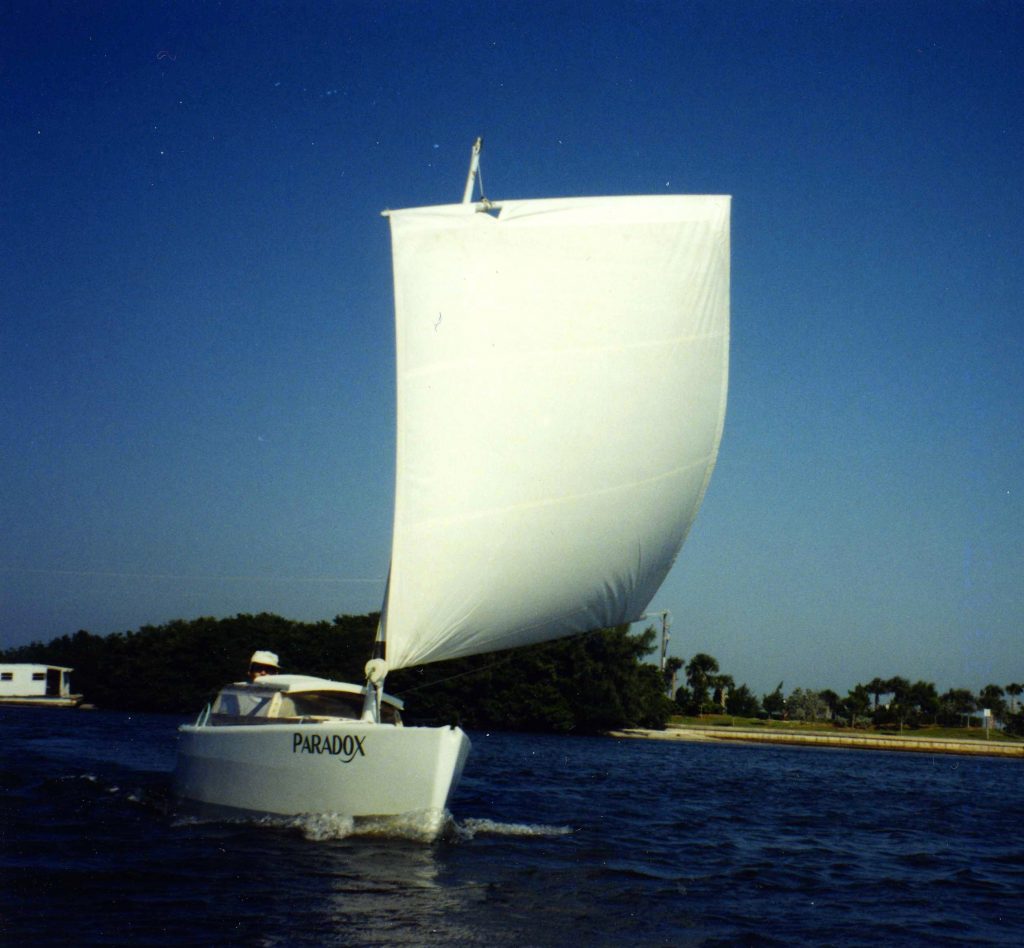
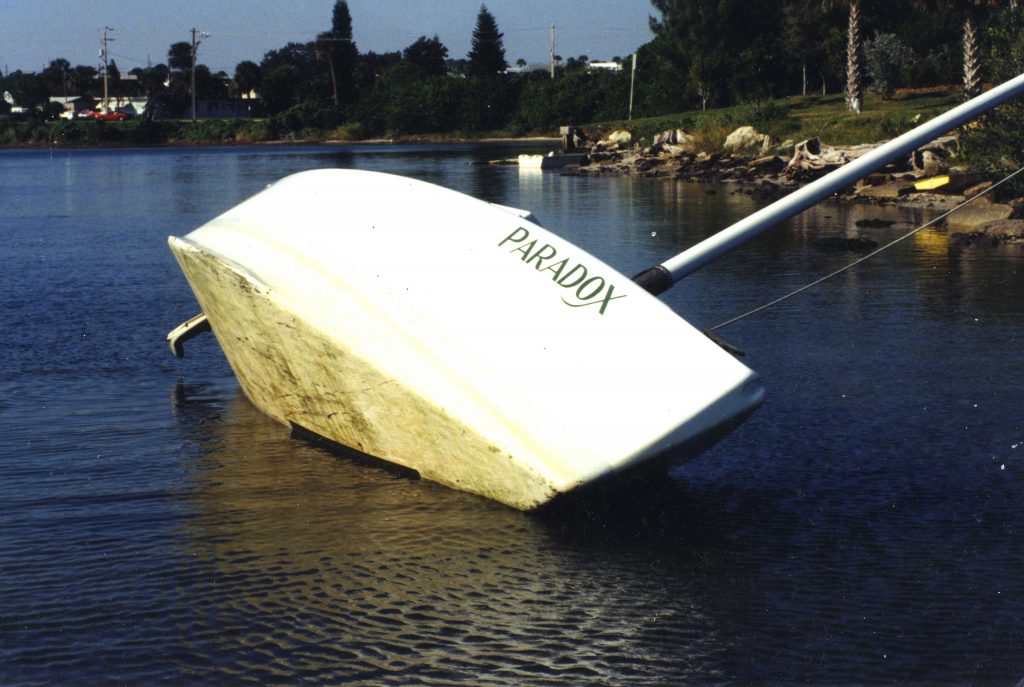
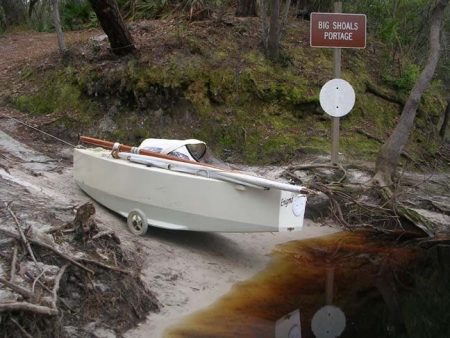
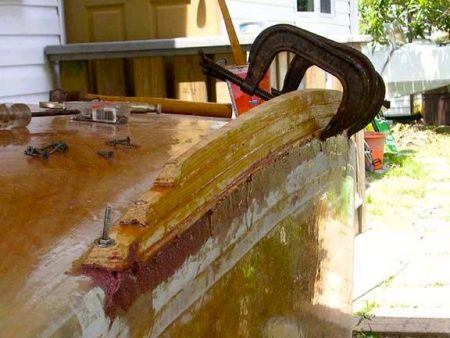

Matt used a lug sail that you could manually roll/furl around the boom. Because the boat was so small it could be easily rowed or sculled.
For Paradox Matt invented a very simple rig. A lug sail that could be furled around a boom with the help of a drum. Everything could be done from inside. He only used three lines to control the sail, a reefing line, a halyard and a sheet. There is a fourth line for controlling the rudder running inside on both sides of the boat.
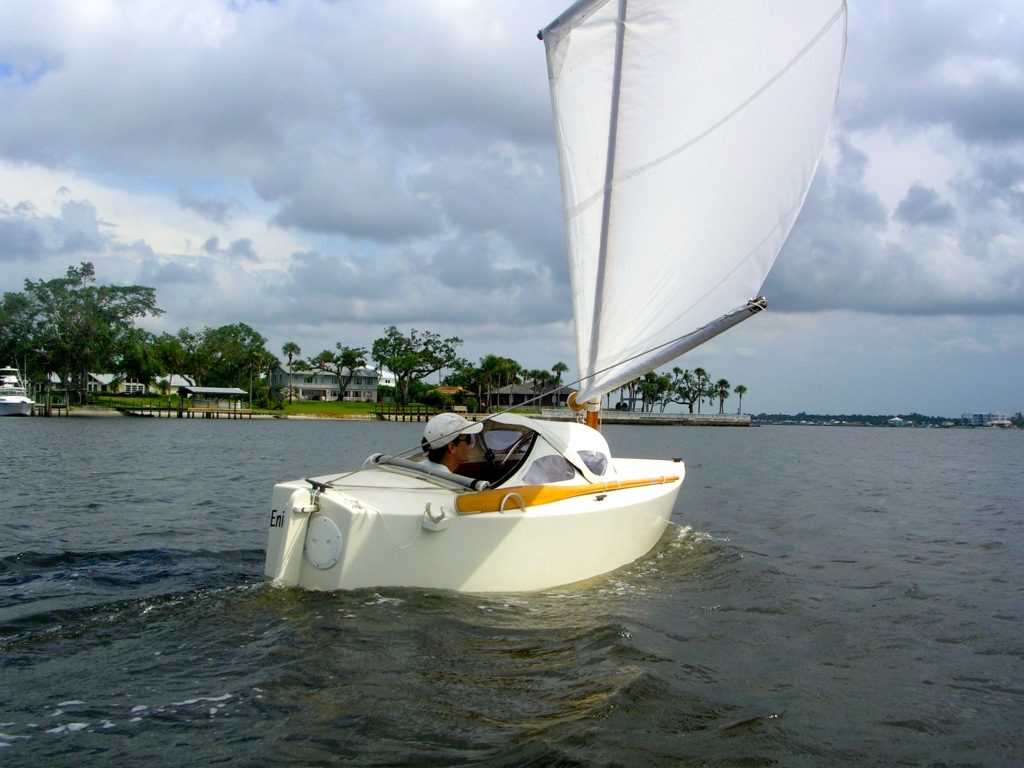
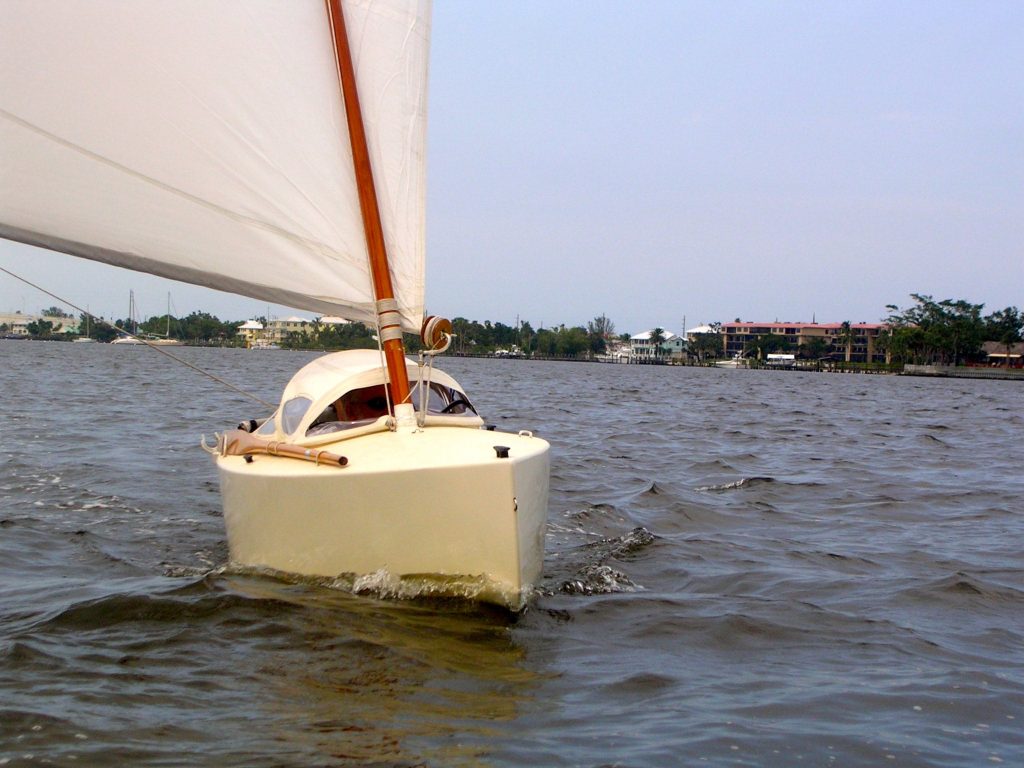
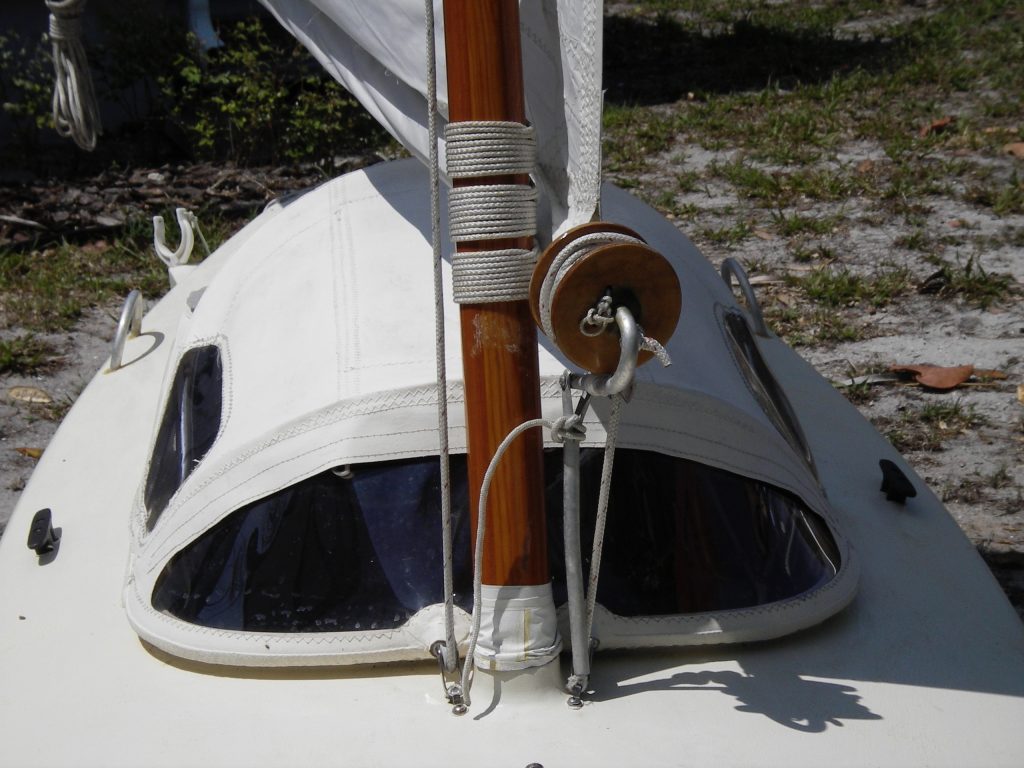
In 2005 built Enigma a small 3.6 (12’) sharpie weighing only 80 kilos (180 pounds). In March 2006 Matt sailed Enigma for 1200 miles around Florida in the Watertribe Ultimate Challenge race to finish first in her class and third overall.
Matt pictures
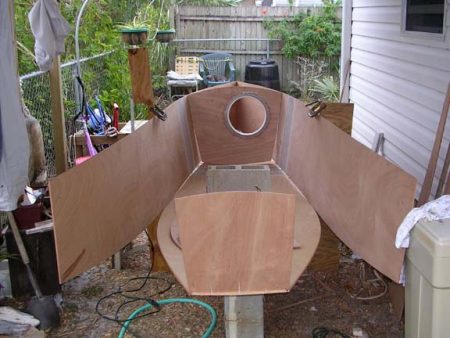
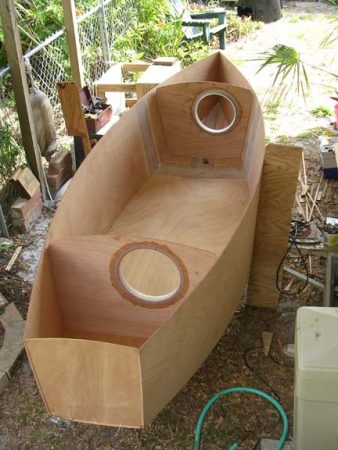
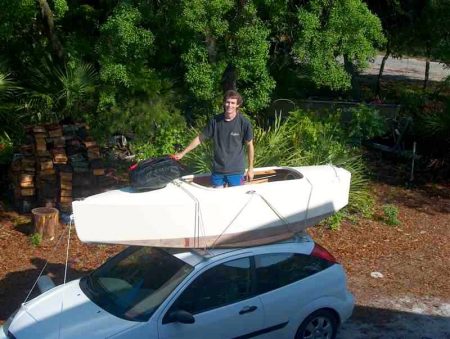
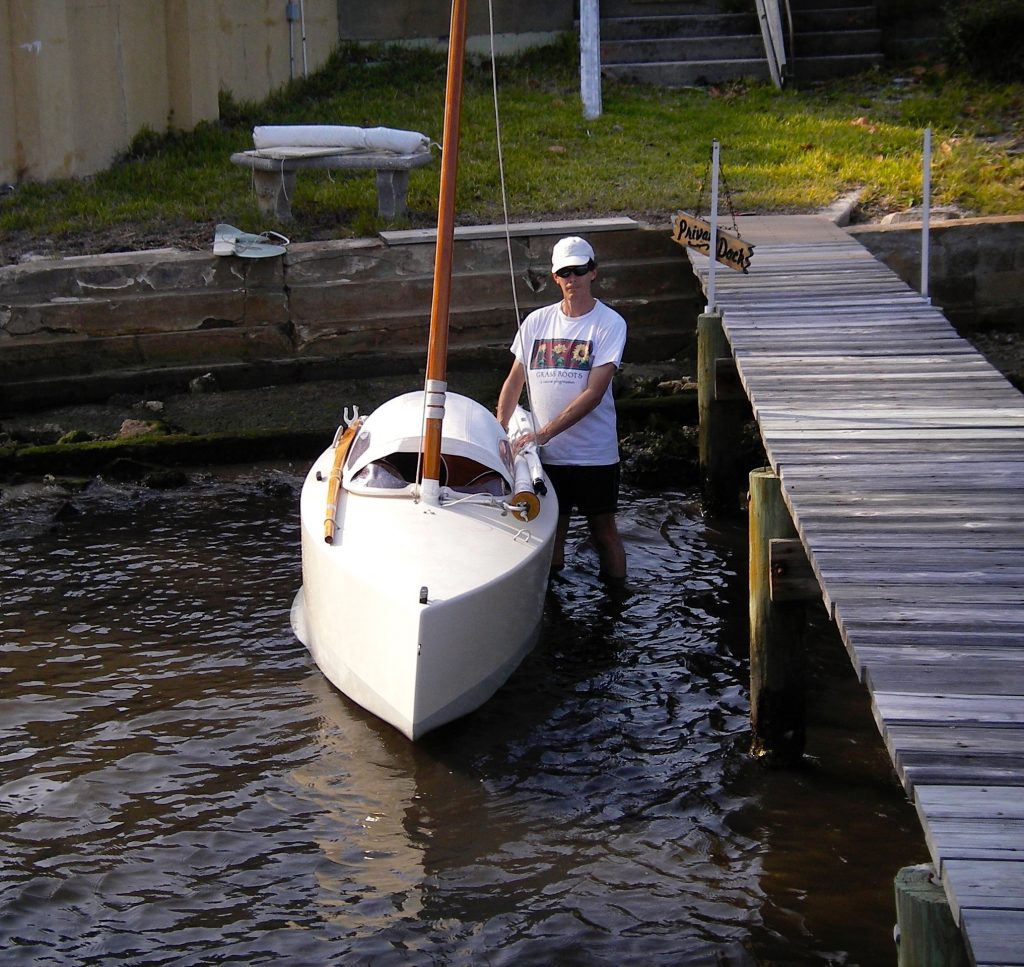
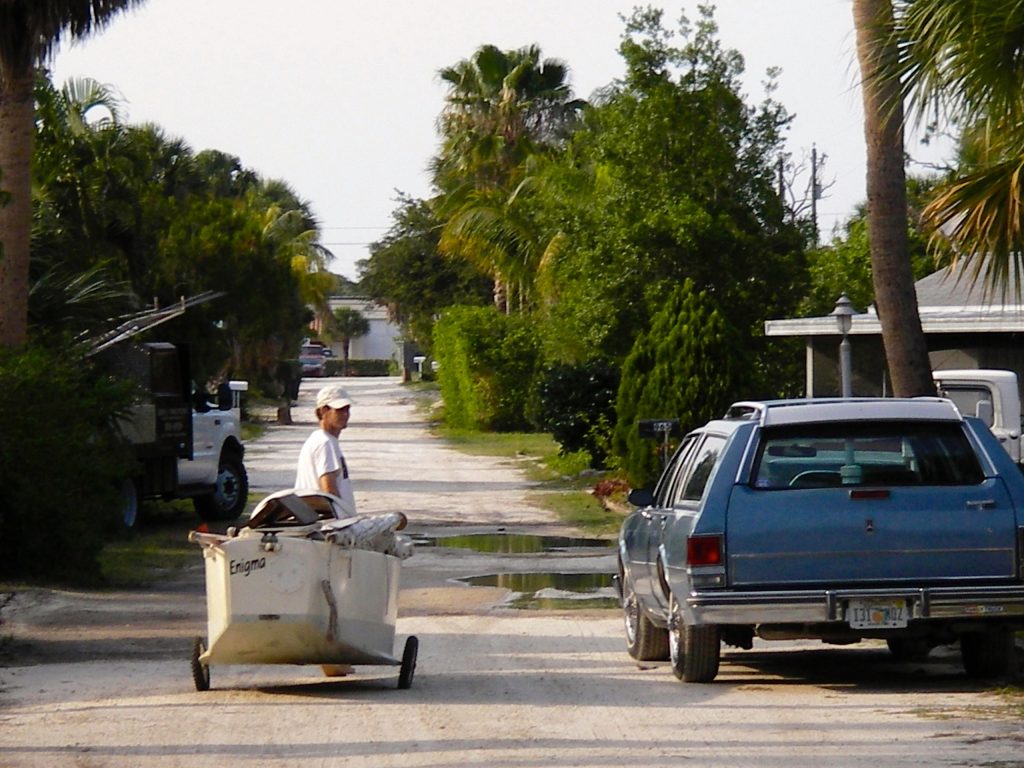
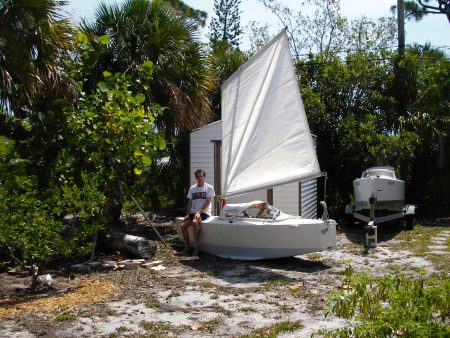
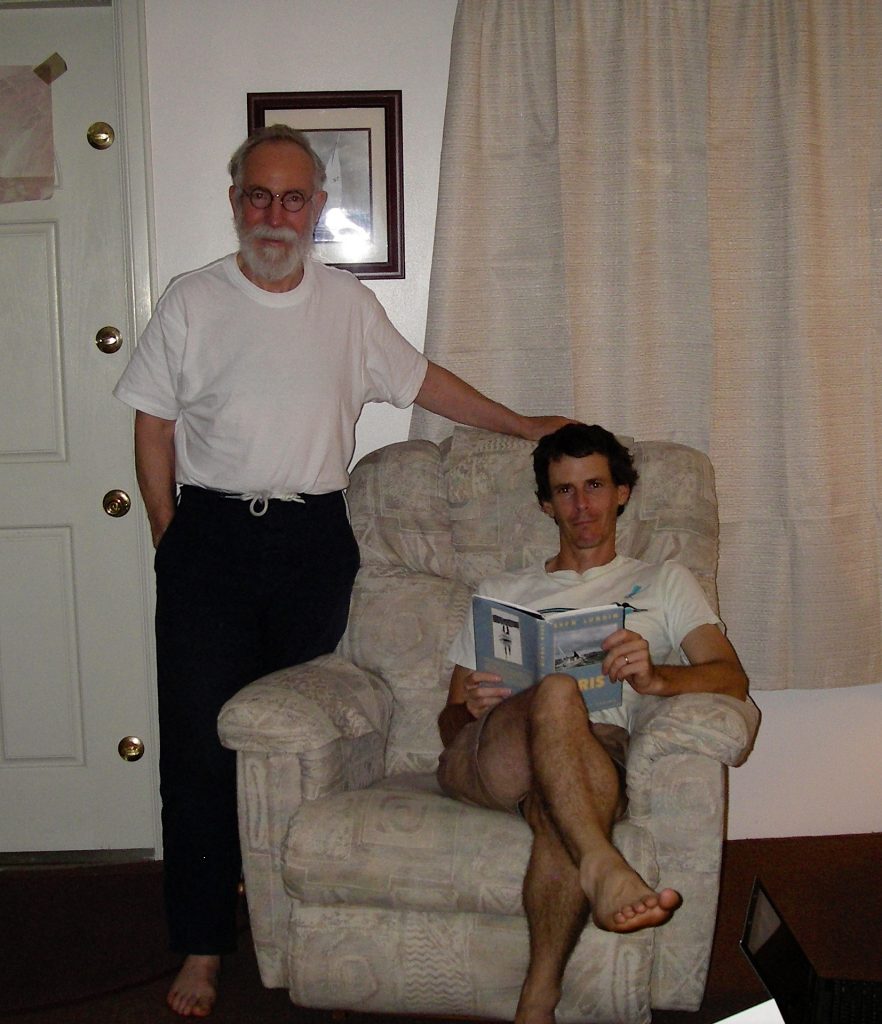
I wrote this on my blog May 17, 2008.
It was when I lived in a little Japanese fishing village, learning how to use their yuloh that they call “ro” (and which, by the way, I think is far superior to the Chinese) that I realized that the strong flat bottom they use for their traditional boats would also give the cruising man many advantages. It can take the ground without getting damaged. It gives a lot of initial stability. It gives greater interior floor space, and of course, it gives very shallow draft.
Later, back in Sweden, when I was brooding over the topic of draft, I remembered I had gotten two letters from America, one from Dave Bolduc and one from Mickie another friend. Both of them contained drawings of Matt Layden’s 14-foot coastal cruiser Paradox. Once more I got out the drawings and looked at them. Paradox has a strong flat bottom and a draft of only nine inches. At first look one gets the impression that she cannot go to windward as it seems that she has no means of preventing leeway. A closer look reveals her chinerunners, small two-inch wide horizontal winglets sticking out from the chines for about a third of the boat’s length. But was that enough? Intrigued, I phoned Dave. He had sailed with Matt for a winter in the Bahamas and confirmed that they worked very well. He gave me Matt’s phone number. I called Matt and he told me that he could sail Paradox better to windward than Dave in his slightly bigger centerboard boat, and he invited me over to see for myself. In October 1997, I sailed Paradox for a month.
I was very curious to see how well the chinerunners on Paradox worked so when Matt asked me where we should sail I said to windward. She certainly sailed as close to the wind as my boats, probably much better.
It certainly is one of the smartest inventions in the history of yachting, simple and cheap, easy to build and it does allow the boat to sail to windward in very shallow water.
Matt had confidence in me and let me use the boat whenever I liked. It was a rare opportunity to learn something special. I took full advantage of it and was out sailing everyday, in the weekends Matt came along.
In 2003 I returned, and again in 2006 and 2007. Each time I stayed for about a month, sailing and discussing boats with Matt. We continue to exchange ideas once a week over the phone, which is very enlightening, as Matt is always one step ahead of me. I am now convinced that the chinerunner concept, created by Matt in 1982, is the greatest innovation for small cruising boats in the last century. The reasons why very few people have realized its advantages are that Matt does not try make his voice heard above the din from the egos in our conservative, self-centered society to promote his idea, and that the principles behind it are complex and subtle, and have been subject to little research and experiment. After a decade studying Paradox, and talking to Matt I have come to understand that the boat’s leeway-resistance comes from a combination of three sources, the chinerunners, the lifting body shaped hull and the large rudder.
Unlike the ordinary cruising boat, Paradox has no heavy ballast keel making her stability obvious. Matt uses less obvious means, like her cruising load kept low and her flat bottom that, a bit like a multihull, moves a lot of buoyancy to lee at small angles of heel. At large angles of heel, Paradox’s righting moment comes from a good height-to-beam ratio and the buoyancy of her superstructure. This shape gives Paradox positive stability at up to 165 degrees of heel. Better than most conventional keel boats
YRVIND.COM 2008
Yrvind.com was a boat inspired by Matt’s chinerunner series. The idea with the name was that when passing ships saw it on their AIS-displays they would search the Internet and find out something about me and hopefully report me as I had no means of long range communication.
I have written about her elsewhere in this blog I only like to mention that besides being somewhat obsessed by broaching-to (besides shallow draft and a few other things). During a test sail in the Stockholm archipelago a friend gave me a tow back to port. As we came back to port he let go the towline instead of going straight Yrvind.com healed over and made a very sharp turn, like a broach-to. Matt says that this has never happened to him. It did not happened to me either, later spending two and a half months in the Atlantic sailing from Ireland to Martinique via Madeira.
As I have written in the Manifesto I now prefer a variable lateral area that is something like a centerboard or leeboard because sailing downwind that gives you one more way to control the boat. The disadvantage is the complication. Coastal sailing like Matt does chinerunners is fine.
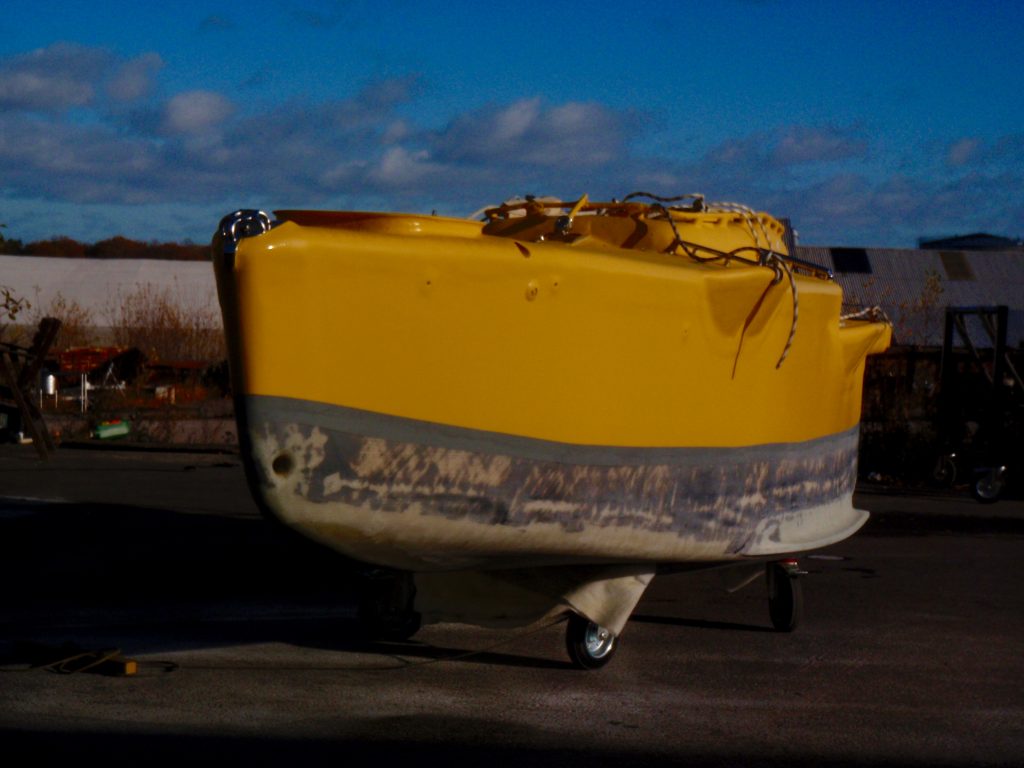
Much more on Matts boats can be found on internet.
See:
Matts boats – microcruising
by Dave Boulduc.
